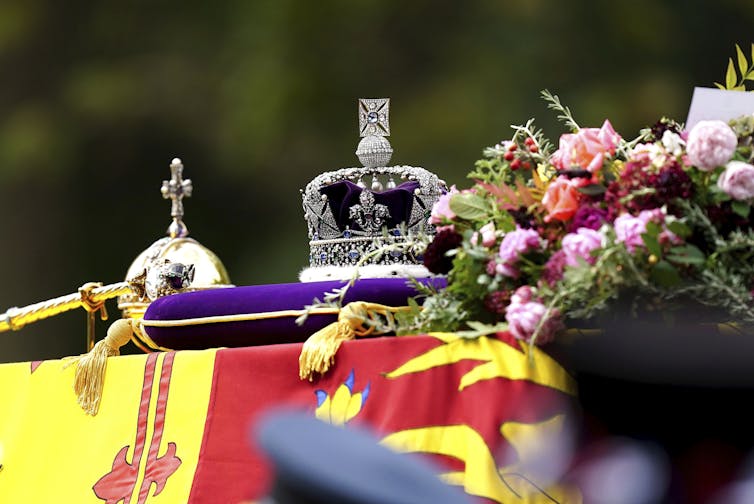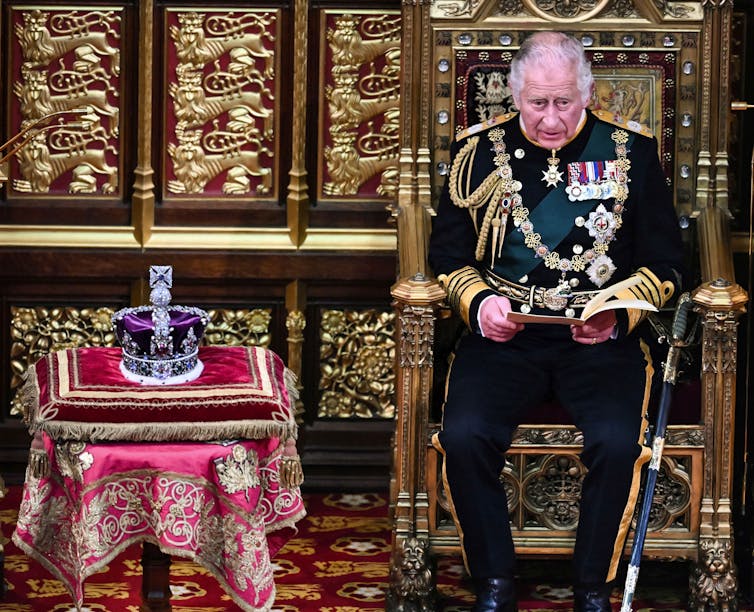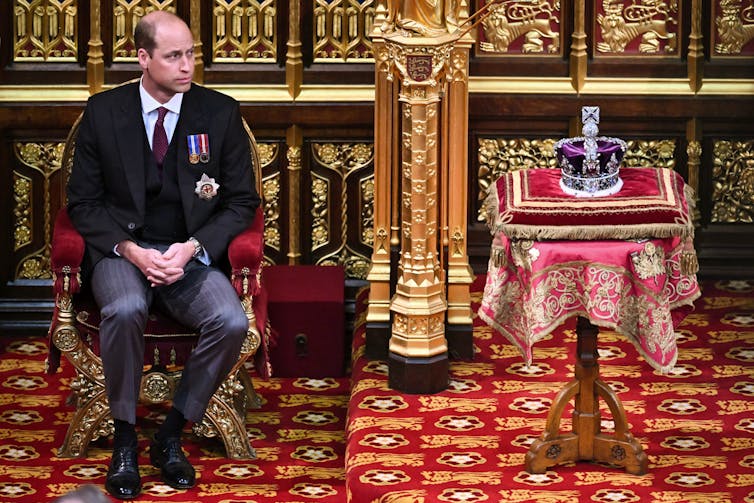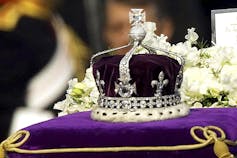
Annie St. John-Stark, Thompson Rivers University
King Charles will be directed by the Archbishop of Canterbury to “punish and reform what is amiss, confirm what is in good order” at his upcoming coronation.
This language is not just symbolic. It’s a contract between the monarch and the British people.
Throughout British history, that contract has often been illustrated through the Crown Jewels and other coronation regalia, which will play a key role in Charles’s formal ascension to the British throne. Majesty, spectacle and celebrity have long been associated with the British Royal Family, and the Crown Jewels have traditionally enhanced each of these aspects.
But in the 21st century, it’s time for the monarch to make good on the vow to “reform what is amiss” and repatriate those priceless gems.
Jewels taking centre stage
I am a settler researcher and teacher of the history of identity politics, historical trauma and British history.
The colonizing and imperial history of three famous pieces of British regalia — the St. Edward’s Crown (Imperial State Crown) and the Sovereign’s Sceptre and the late Queen Mother’s crown — include in their designs the marks of colonialism in the form of the Cullinan I, Cullinan II and Koh-i-Noor diamonds as well as thousands of other jewels.

These diamonds have a painful history and yet two of them are taking centre stage at King Charles’s coronation at a time of acute post-colonial pain. The Royal Family is aware of this history; that’s likely why it opted against including the Koh-i-Noor diamond in the coronation ceremony.
There have been calls for the Koh-i-Noor diamond to be repatriated to South Asia amid public debates about Britain’s colonizing history (although the Indian government has said it officially has laid this claim to rest).
Nonetheless, other Crown Jewels will be on full display through much of the ceremony: St. Edward’s Crown, the Sovereign’s Sceptre, the Sword of State and the Sovereign’s Orb, as well as coronation clothing embedded with precious gems.
This display is intended to capture attention, reinforce British identity and immerse British and Commonwealth citizens in the sovereign-subject relationship. That’s an especially important aim today since the monarchy’s identity now and into the future is at stake.
The stolen Crown Jewels
The legacy of colonization by the British Empire — and of decolonization efforts in the United Kingdom in the 20th and 21st centuries — is weighted with trauma and questions of identity and nationhood.
The coronations of English monarchs back to Edgar in 973 CE mark transitions in power, define monarchs and their subjects and distinguish human skills of governance from those that are supposedly divinely imparted.
In the 21st century, however, the Crown Jewels and coronation regalia are under intense scrutiny amid decolonization and ongoing efforts to repair Britain’s global relationships.
Identity and repair are at the centre of current developments, reinforcing the importance of this coronation — and King Charles himself.
The intense focus on the meaning of the monarchy following Queen Elizabeth’s death suggests the public is debating its relevance and value in the 21st century.
Living and teaching in Canada, on unceded territory of the Tk’emlups te Secwepemc, I have noted the dispassionate response of Indigenous leaders to invitations to attend her funeral. That some Indigenous leaders didn’t feel mournful about her passing reflects the impact of colonization on the monarchy.
Colonial aggression
Consequently, the Crown Jewels represent something much more than the majesty of British history because they incorporate gems that are artefacts of colonial aggression and ideology.
If coronation viewers are enchanted by the majesty and historical grandeur of the coronation ceremony, are they also enchanted by Britain’s brutal colonial past?
Specifically, will viewers be struck by the contradiction between the supposed purity and sanctity of St. Edward’s Crown, the Imperial Crown, the Sovereign’s Sceptre and Orb and the savage and demeaning colonial origins of the gems embedded within them?

A fully engaged awareness and acknowledgement of those origins must be part of the coronation if the monarchy is to remain relevant.
The Cullinan I and Cullinan II diamonds are emblematic of Britain’s colonizing and imperial past. They are set in the Sovereign’s Sceptre and the Imperial State Crown, respectively.
They are apparent symbols of power, justice and righteousness yet they don’t possess those attributes at all. Their presence in the Crown Jewels is a stain on the coronation.
Koh-i-Noor diamond
The same is true for the Koh-i-Noor diamond, forcibly “gifted” in 1849 by 10-year-old Maharajah Duleep Singh to the British East India Company and subsequently placed into the crown of the late Queen Mother for her coronation in 1937.
Although it won’t be seen at Charles’s coronation, it’s still among the Crown Jewels — and it’s hardly the embodiment of virtue.

Indian political figures continue to push for the return of the Koh-i-Noor, including a descendant of Mahatma Gandhi, who has pointed to its return as a critical component of British “atonement” for brutally colonizing India from the 17th through to the 20th centuries.
Some Crown Jewels aren’t subject to calls for repatriation. They include the blue sapphire in St. Edward’s Crown, which was created in 1661, and the spinel known as the Black Prince’s Ruby in the Imperial State Crown, created in 1937.
They do, nonetheless, detract from the attributes of a monarch. As symbols of vast riches, they raise questions about what purpose the monarchy serves in the functioning of a country beset by economic challenges, cultural disruptions, immigration challenges, climate crises and a history of institutional racism and inequity.
If King Charles is truly to punish and reform what is amiss, and confirm what is in good order, then he must begin with the Crown Jewels — and acknowledge and repair the damage done in their acquisition.
Gems do not a monarch make, and repatriating them would strengthen and modernize the contemporary British monarchy at a time when it most urgently needs to do so.![]()
Annie St. John-Stark, Assistant Professor of History, Thompson Rivers University
This article is republished from The Conversation under a Creative Commons license. Read the original article.

